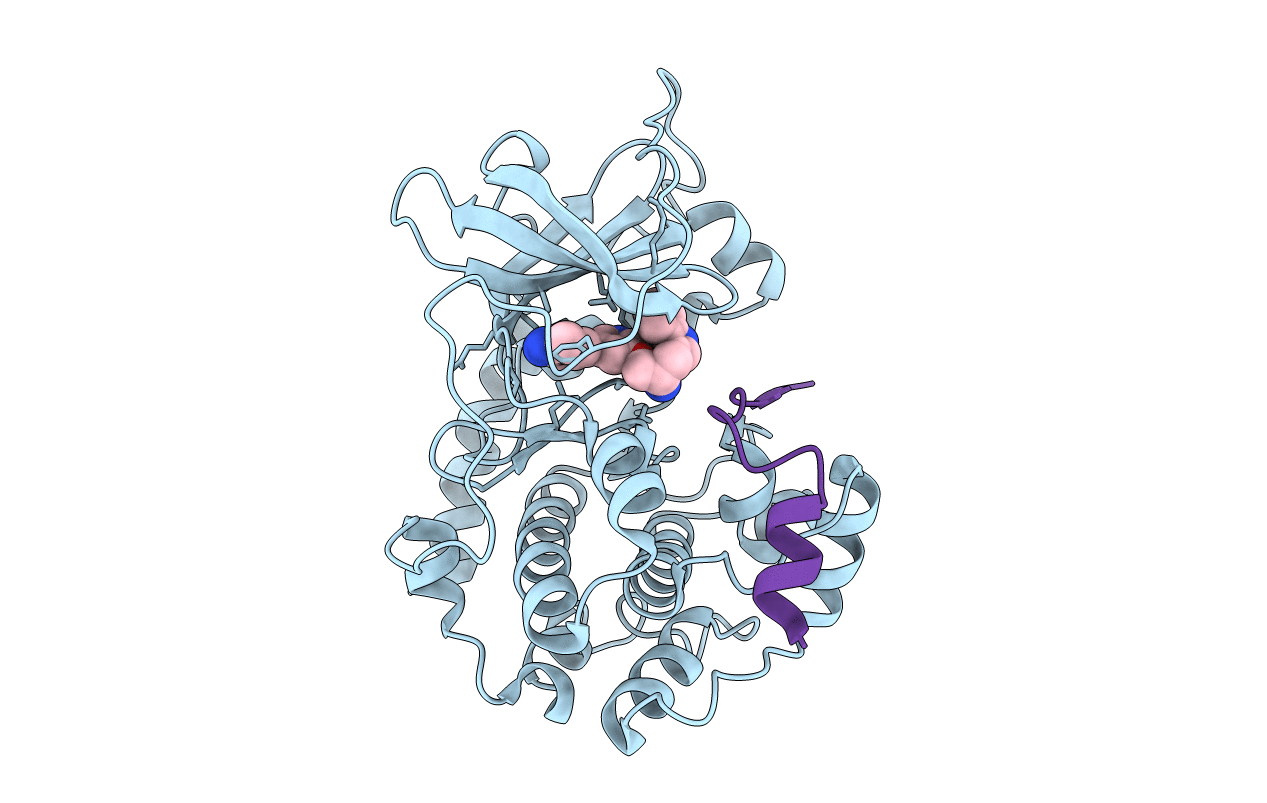
Deposition Date
2007-01-12
Release Date
2007-02-13
Last Version Date
2024-11-20
Entry Detail
PDB ID:
2JDS
Keywords:
Title:
Structure of cAMP-dependent protein kinase complexed with A-443654
Biological Source:
Source Organism:
BOS TAURUS (Taxon ID: 9913)
HOMO SAPIENS (Taxon ID: 9606)
HOMO SAPIENS (Taxon ID: 9606)
Host Organism:
Method Details:
Experimental Method:
Resolution:
2.00 Å
R-Value Free:
0.27
R-Value Work:
0.20
R-Value Observed:
0.21
Space Group:
P 21 21 21


